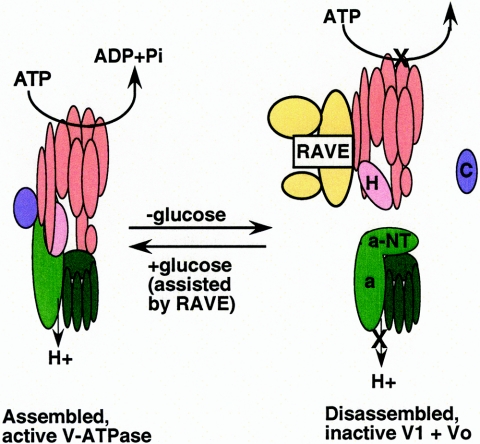FIG. 3.
Overview of reversible disassembly in yeast cells. Intact, active V-ATPase complexes are rapidly disassembled into free V1 and V0 complexes in response to glucose deprivation (61). Glucose readdition results in reassembly of the V-ATPase, and is slow and incomplete in the absence of the RAVE complex (131). RAVE binding to V1 is compromised in mutants lacking subunit E or G, suggesting that these two subunits are involved in the interaction of V1 and RAVE (135). Subunits that are believed to undergo major conformational changes during disassembly are identified: the H subunit shifts from being an activator of V1V0 complexes to being an inhibitor of free V1 complexes (113), the cytoplasmic N-terminal domain of the a subunit appears to fold down onto the rest of V0 (157), and the C subunit is released from both the V1 and the V0 sectors during disassembly (61).

